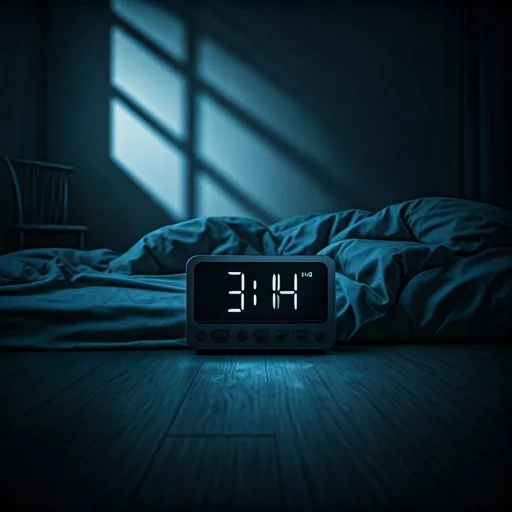Prescribing Medications for Sleep Disorders in Older Adults

Evelina Sterina, MD, MSc; Julia Golden, MD; Grace Ma, MD. Brigham & Women’s Hospital/Harvard Medical School Psychiatry Residency, Boston, MA.
Drs. Sterina, Golden, and Ma have no financial relationships with companies related to this material.
Mrs. L, 76, reports months of poor sleep, daytime exhaustion, recent falls, and memory lapses. Despite trying over-the-counter (OTC) remedies and avoiding naps, her symptoms persist. She’s irritable, fatigued, and losing hope.
Sleep disorders affect nearly half of adults over 65, impairing quality of life and increasing risks of cognitive decline, mood disorders, falls, metabolic syndrome, heart disease, stroke, and cancer (Patel D et al, J Clin Sleep Med 2018;14(6): 1017–1024). Cross-sectional and longitudinal studies consistently show that older adults with insomnia have higher rates of depression and suicidality. Aging alters sleep patterns, reducing REM and slow-wave sleep and exacerbating sleep disturbances. In this article, we’ll explore the most effective ways to treat common sleep disorders and help older adults get the sleep they need.
Common sleep disorders
Insomnia
The most common sleep disorder in older adults is characterized by discontent with sleep quality or quantity (for more, see CGPR Jan/Feb/Mar 2024). Although aging impacts sleep “pressure” (ie, sleep drive) and circadian rhythm, insomnia isn’t a normal part of getting older. Sleep maintenance insomnia is especially common due to these age-related changes.
Obstructive sleep apnea (OSA)
Due to structural changes in the upper airway, OSA affects up to 70% of older men and 56% of older women, compared to 15% of younger men and 5% of younger women (Bloom HG et al, J Am Geriatr Soc 2009;57(5):761–789). Consider ordering polysomnography in older patients with excessive daytime sleepiness because snoring, breathing pauses, and obesity become less sensitive signs (Tatineny P et al, Mo Med 2020;117(5):490–495).
Restless legs syndrome (RLS) and periodic limb movement disorder (PLMD)
That irresistible urge to move the legs, especially during inactivity and at night, points to RLS. Look for signs of leg discomfort and a family history of RLS in older adults, especially those with cognitive impairment. Dopamine agonists are often effective. PLMD, which involves repetitive leg movements during sleep, may occur with or without RLS (Suzuki K et al, J Gen Fam Med 2017;18(2):61–71).
REM sleep behavior disorder (RBD)
Sleep talking or acting out dreams is a hallmark of RBD, which is strongly associated with Parkinsonian disorders. Up to 50% of RBD patients develop a Parkinsonian disorder within a decade, and up to 90% are eventually diagnosed with Parkinson’s. Assess for early signs of parkinsonism in suspected cases.
Circadian rhythm sleep disorders
Aging shifts circadian rhythms, causing older adults to feel tired earlier in the evening and wake earlier in the morning. These shifts, along with reduced light sensitivity, can lead to advanced or delayed sleep patterns. Bright light exposure during the day can help regulate the patient’s day-night cycle (Tatineny et al, 2020).
Assessment
Gather a thorough sleep history with input from the patient, their sleep partner, or a caregiver. Ask about:
- When they go to bed and wake up
- How long it takes to fall asleep
- How often and for how long they wake up
- Overall satisfaction with sleep
Don’t overlook environmental and behavioral factors. Ask about:
- Nighttime habits (eg, use of electronics, caffeine or alcohol consumption, nicotine use)
- Whether they nap during the day
- How much they exercise
- Psychological stressors
- Their bedroom environment (temperature, light levels, and noise from spouses or pets can all play a role)
A week-long sleep diary can reveal patterns and triggers you might miss.
Assessment tools
Standardized tools, such as the Insomnia Severity Index and Pittsburgh Sleep Quality Index, can provide structure to your assessment. Sleep studies are not typically needed for insomnia but can rule out apnea, circadian rhythm disorders, or nocturnal movement disorders (Patel et al, 2018; Tatineny et al, 2020).
Beyond sleep habits, consider other medical and psychiatric conditions like depression, anxiety, dementia, chronic pain, heart failure, thyroid dysfunction, and overactive bladder. Medications like antidepressants, antihypertensives, bronchodilators, glucocorticoids, or stimulants can also impede sleep.
Nonpharmacologic interventions
Sleep hygiene
Teach the basics: Keep consistent bedtimes, avoid naps, limit caffeine and alcohol intake, and create a relaxing pre-bed routine. Relaxation techniques (mindfulness, paced breathing, guided imagery) can help patients wind down before bed.
Exercise
Encourage regular aerobic activity (eg, walking, swimming) earlier in the day. Late-night workouts can disrupt sleep.
Cognitive behavioral therapy for insomnia (CBT-I)
CBT-I is the gold standard. Over 6–10 sessions, a therapist helps patients reframe maladaptive thoughts about sleep and adopt better habits, such as reducing time in bed to increase sleep drive. Shorter versions, like Brief Behavioral Treatment for Insomnia (BBTI), are equally effective for many (Patel et al, 2018). CBT-I can also be delivered electronically: SleepioRx is a digital therapeutic with recent FDA approval to treat chronic insomnia.
Pharmacologic treatments
Melatonin and ramelteon
Melatonin is a mildly effective OTC supplement that improves sleep initiation and quality. Ramelteon, a melatonin receptor agonist, has stronger evidence for use, although it’s more expensive. Both are well tolerated and ideal for older adults with circadian rhythm disruptions (Patel et al, 2018; Samara MT et al, Acta Psychiatr Scand 2020;142(1):6–17).
Orexin receptor agonists
Suvorexant, lemborexant, and daridorexant are FDA approved for insomnia and can help with sleep maintenance. Consider the following when prescribing:
- More expensive and may not be covered by insurance.
- Well tolerated, although associated with dose-dependent somnolence.
- Fewer effects on cognition or balance than benzodiazepines (BZDs) (Abad V and Guilleminault C, Drugs & Aging 2018;35:791–817).
The SUNRISE-1 trial in older adults compared lemborexant to placebo and extended-release zolpidem. Lemborexant significantly improved sleep onset and maintenance (Rosenberg R et al, JAMA Netw Open 2019; 2(12):e1918254).
Low-dose doxepin
Doxepin is FDA approved at low doses (3 mg and 6 mg) and great for sleep maintenance with minimal anticholinergic effects. The 3 mg and 6 mg tablets can be expensive, but prescribing doxepin (Sinequan) 10 mg capsules is a fine off-label alternative. Another off-label option is the liquid formulation to administer smaller doses.
Mirtazapine
While mirtazapine is commonly prescribed for insomnia, do not use it as a monotherapy given the presence of other efficacious options. Still, it can be beneficial for concurrent insomnia and depression or poor appetite (Patel et al, 2018).
BZDs
Use BZDs with caution, if at all. Among the FDA-approved options, only temazepam and triazolam are commonly prescribed. Triazolam is short acting and may increase risk of complex sleep behaviors (eg, sleepwalking, driving, or eating).
While effective for both sleep onset and maintenance, BZDs increase risks of cognitive impairment, falls and fractures, sedation, rebound insomnia, tolerance, and dependence. Long-acting BZDs may provide greater benefit for sleep maintenance, but they come with an increased risk of daytime sleepiness and cognitive impairment (Abad and Guilleminault, 2018).
Non-BZD hypnotics (“Z-drugs”)
Zolpidem, eszopiclone, and zaleplon have less impact on sleep architecture than BZDs. Watch for next-day sedation, driving impairment, or complex sleep behaviors. Short-acting formulations or intermittent dosing are preferable in older adults (Abad and Guilleminault, 2018).
Medications to avoid
Despite trazodone’s widespread use, the American Academy of Sleep Medicine guidelines recommend against it for insomnia (see “Risks in Older Adults: Insomnia and Sleep Medications” on page 8 for more). Trazodone lacks strong evidence for efficacy and has associated risks like dizziness and orthostatic hypotension, in addition to a fall risk that’s comparable to BZDs. Still, you might consider it for insomnia in patients with depression or dementia (Abad and Guilleminault, 2018). Antipsychotics should be reserved for cases involving severe psychiatric conditions. Similarly, mood stabilizers and pramipexole should be reserved for patients with specific psychiatric or neurologic comorbidities (Suzuki et al, 2017).
For Mrs. L, a detailed history and sleep diary confirm primary insomnia. Given her cognitive complaints and fall history, you suggest starting with CBT-I. At follow-up, she reports sleeping better and feeling more rested. However, residual sleep maintenance issues lead you to add low-dose doxepin, which she tolerates well.
Special considerations in older adults
Metabolism
Aging slows hepatic and renal clearance, prolonging drug half-lives. Because many older adults have a higher proportion of body fat, lipophilic drugs (such as Z-drugs) may have an increased volume of distribution and linger in the body.
Polypharmacy risks
Many older adults take multiple medications, which raises the risk for interactions. Combining BZDs with opioids, for example, can lead to dangerous respiratory depression. Additionally, older adults may take OTC sleep aids, which are usually anticholinergic and can have additive anticholinergic or sedative effects when combined with prescribed medications.
Titrate carefully
Always use the lowest effective dose to minimize risks like falls, daytime sedation, and cognitive impairment (Abad and Guilleminault, 2018). Monitor closely and reassess regularly, ideally within two to four weeks of medication initiation. Encourage patients to keep sleep diaries to guide dose adjustments or identify side effects. When discontinuing medications, taper gradually to avoid rebound insomnia or withdrawal symptoms.
Carlat Verdict: When treating insomnia in older adults, start with a stepwise approach. After addressing medical causes of sleep disturbance, begin with CBT-I and relaxation training. If medications are needed, stick with safer choices like melatonin, ramelteon, orexin receptor antagonists, or low-dose doxepin. Avoid long-term use of BZDs or Z-drugs whenever possible.

Newsletters
Please see our Terms and Conditions, Privacy Policy, Subscription Agreement, Use of Cookies, and Hardware/Software Requirements to view our website.
© 2025 Carlat Publishing, LLC and Affiliates, All Rights Reserved.


_-The-Breakthrough-Antipsychotic-That-Could-Change-Everything.webp?t=1729528747)



